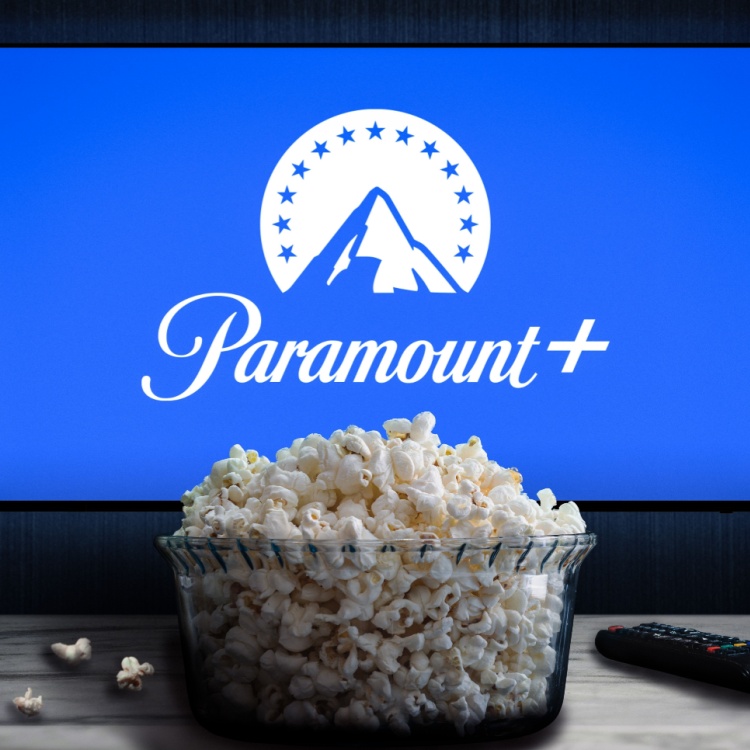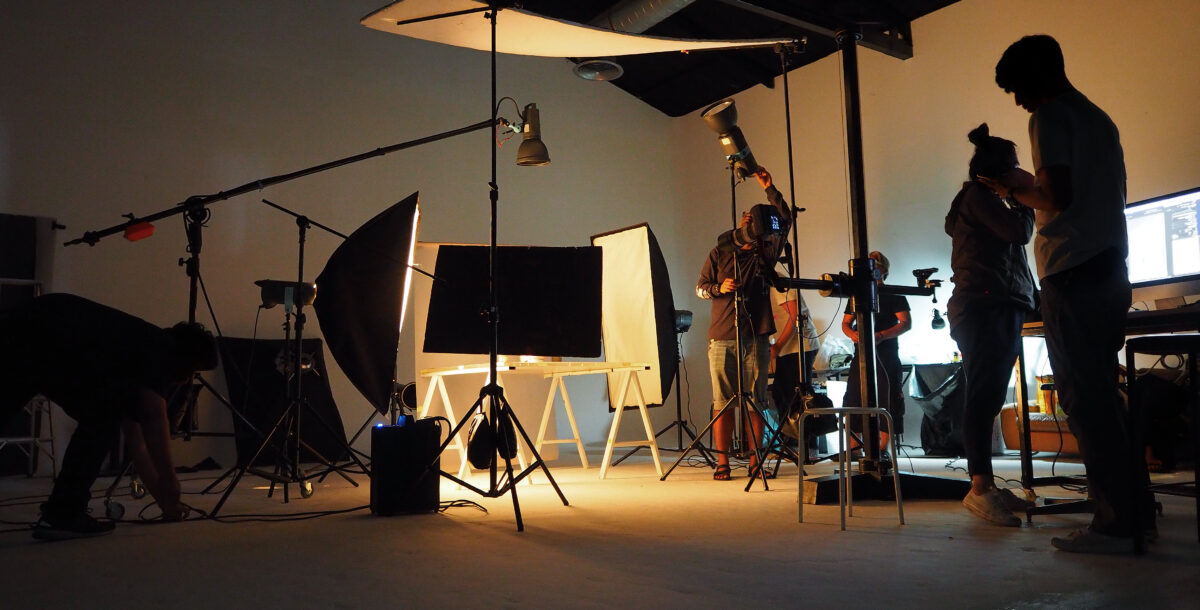
Why Mad Men Marketing Is Your Go-To Partner for Advertising on Fox One
Fox One Is Coming: Are You Ready for the Next Big Thing in Streaming TV?
This Fall, Fox One is set to become the newest heavyweight in the streaming television landscape—bringing premium content, a built-in audience from the Fox brand, and a fresh advertising opportunity for brands ready to take advantage of it.
At Mad Men Marketing, we’ve been ahead of the curve in streaming TV advertising for years. As Fox One rolls out in Fall 2025, we’re already helping businesses like yours craft effective, data-driven campaigns to dominate this new platform from day one.
Why Fox One Matters for Your Brand
Fox One isn’t just another streaming service. It’s backed by the trusted Fox network, known for hit shows, live sports, and a loyal viewer base. That means:
-
High viewer engagement
-
Target-rich environments for ads
-
Premium content inventory
-
Cross-platform reach (TV, mobile, desktop, and CTV apps)
With CTV (connected TV) ad spend expected to surpass $40 billion by the end of 2025, Fox One is arriving at exactly the right time for brands looking to scale.
Mad Men Marketing: Streaming TV Is in Our DNA
We don’t just “do streaming.” We live and breathe OTT/CTV advertising. When you work with Mad Men Marketing, you’re partnering with a team that:
-
Has hands-on experience with top-tier streaming platforms
-
Builds custom audience targeting strategies using first- and third-party data
-
Designs high-impact creative that fits the platform and the moment
-
Delivers full-funnel attribution so you know what’s working—and what’s not
And now, with Fox One entering the market, we’re unlocking new inventory and new possibilities for our clients across every vertical.
What Sets Us Apart?
✅ Early Access & Beta Opportunities
We stay ahead of the pack by cultivating direct relationships with streaming platforms—giving our clients first-mover advantages like early ad placement access and exclusive beta inventory on emerging platforms like Fox One.
✅ Hyperlocal & National Reach
Whether you’re a local business or a national brand, we fine-tune campaigns to reach your exact audience with granular geographic targeting and real-time campaign optimization.
✅ Transparent Results
Our proprietary dashboard gives you real-time reporting across devices, letting you measure true ROI—not just impressions.
Ready to Dominate Fox One? Let’s Talk.
The launch of Fox One marks a massive opportunity—but only for brands that move early and partner smart. At Mad Men Marketing, we’re already helping clients plan, buy, and optimize streaming campaigns for this exciting platform.
If you’re looking for a proven streaming TV advertising agency that understands how to make your brand shine on Fox One, you’re in the right place.

Paramount+ vs Broadcast
The Advantages of Advertising on Paramount + vs. Broadcast TV
In today’s evolving advertising landscape, choosing the right platform can significantly impact your brand’s success. With traditional broadcast television competing against newer streaming platforms like Paramount Plus, it’s essential to understand which medium offers greater advantages for your marketing goals.
At Mad Men Marketing, we frequently advise clients about effective advertising strategies tailored to modern audiences. In this article, we outline key benefits of advertising on Paramount Plus compared to traditional broadcast television.
Targeted Audience Reach
Paramount Plus:
Advertising on Paramount Plus offers powerful targeting options, allowing brands to reach specific demographics based on interests, viewing habits, and content preferences. This tailored approach ensures your message resonates directly with your ideal audience, enhancing ad effectiveness and ROI. You can also view analytics about your ads in real-time. Paramount Plus even has a pixel you can add to your website to track a desired action.
Broadcast Television:
Traditional broadcast television typically provides a broad, less targeted audience. While beneficial for mass-market awareness, it doesn’t offer precise demographic targeting, potentially leading to less efficient use of advertising budgets. This is especially notable when you have a business with a single location in a specific area of town that wouldn’t benefit from the reach of a large geographic DMA.
Higher Viewer Engagement
Paramount Plus:
Viewers on Paramount Plus are actively selecting their content, making them more engaged with what they watch—and consequently, with the advertisements they see. Ads within streaming services are often shorter and less intrusive, making viewers less likely to tune them out.
Broadcast Television:
Broadcast TV ads often interrupt programming, leading to lower viewer engagement. Audiences typically utilize commercial breaks for other activities, decreasing ad recall and overall effectiveness.
Precise Analytics and Measurement
Paramount Plus:
Advertising on streaming platforms like Paramount Plus provides detailed analytics such as viewer impressions, demographic insights, ad completion rates, and engagement metrics. This rich data helps brands optimize their campaigns in real-time, improving performance continuously.
Broadcast Television:
Traditional TV ads rely on broader, less granular ratings systems. While useful, these ratings offer limited immediate insight into campaign performance, viewer engagement, or detailed demographic data, making precise optimization more challenging.
Flexibility and Cost Efficiency
Paramount Plus:
Digital streaming platforms offer flexible advertising packages with customizable budgets, campaign lengths, and ad placements. Brands can start, pause, or adjust their campaigns quickly to respond to performance data or market conditions, ensuring maximum budget efficiency.
Broadcast Television:
Advertising on broadcast television typically requires larger budgets, longer lead times, and fixed schedules. There’s less room to make rapid adjustments, potentially leading to less efficient use of advertising spend.
Growing and Diverse Audiences
Paramount Plus:
Streaming services like Paramount Plus are rapidly growing their user base, capturing diverse audiences across all demographics. The rise of cord-cutting means more consumers are adopting streaming platforms, presenting advertisers with significant new growth opportunities.
Broadcast Television:
While still reaching broad audiences, broadcast television faces declining viewership among younger demographics who increasingly prefer digital and streaming platforms. Advertisers targeting younger or tech-savvy consumers may miss key opportunities by relying solely on broadcast television.
Less Ad Clutter, Greater Visibility
Paramount Plus:
Paramount Plus generally offers limited commercial breaks, meaning fewer ads competing for viewer attention. This reduced clutter ensures your advertisements stand out, leading to greater visibility and brand recall.
Broadcast Television:
Commercial breaks on broadcast TV can be lengthy and crowded, making it challenging for individual ads to capture viewer attention. Increased clutter decreases overall ad visibility and effectiveness.
Final Thoughts: Paramount Plus or Broadcast TV?
When considering advertising strategies, it’s clear that Paramount Plus offers significant advantages over traditional broadcast television, especially regarding targeted reach, viewer engagement, precise analytics, budget flexibility, and reduced ad clutter.
Mad Men Marketing can help your brand navigate this landscape effectively. Our expert media planners will develop tailored campaigns designed for maximum impact on platforms like Paramount Plus.
Ready to elevate your advertising strategy with Paramount Plus? Contact Mad Men Marketing today to get started.

Lights, Camera, Action! What Goes Into a Video Shoot at Mad Men Marketing
In today’s content-driven world, high-quality video production can be the linchpin of a successful marketing strategy. Our video shoots are more than just hitting “record”—and yours should be, too! Here’s a deep dive into what goes into making a stellar video, from pre-production to post-production.
Pre-Production: Laying the Groundwork for Success
Before any camera is switched on, thorough planning is essential. Pre-production is the phase where the blueprint for the video is created. Here’s what it entails:
- Concept Development: Every great video starts with a strong concept. This is where we brainstorm and develop creative ideas that align with your brand message, target audience, and campaign goals. Whether it’s a product demo, a story-driven ad, or a behind-the-scenes feature, the concept isn’t just driving the process; it’s the foundation for everything else.
- Scriptwriting: Once the concept is solidified, we craft a script that outlines the narrative, key messages, dialogue, and pacing. The script serves as the backbone of the video, providing clarity and direction.
- Storyboarding: Storyboards are visual representations of each shot. These sketches guide the camera angles, transitions, and scenes, ensuring everyone is on the same page about the video’s flow.
- Casting & Talent Selection: Depending on the project, casting might involve finding the perfect actors, voice-over artists, or even featuring real employees. We seek talent that authentically represents the brand in order to best resonate with your target audience.
- Location Scouting & Permits: We identify the ideal filming locations—whether it’s on-site at your business, in-studio, or in a scenic outdoor space—and handle any necessary permits or permissions.
- Equipment & Crew Coordination: Every successful shoot requires the right tools. We determine the necessary equipment—cameras, lighting, sound gear—and assemble a skilled crew, ranging from video directors, audio engineers, and post-production experts who will be putting together the final product.
Production: Bringing the Vision to Life
This is the “lights, camera, action” phase—the moment when all of our careful planning comes together in a live shoot. Production involves:
- Setup: Our team arrives beforehand to set up the equipment, including cameras, lighting rigs, audio recording devices, and props as needed. The setup ensures that every shot looks and sounds its best.
- Directing the Shoot: The director and crew guide the talent, capturing scenes based on the storyboard and script. We monitor lighting, sound, framing, and pacing to ensure we’re achieving the desired visual and emotional impact while remaining true to the over-arching concept.
- Multiple Takes & Adjustments: Perfection often requires multiple takes. We adjust lighting, angles, and performances to capture the best possible footage. Flexibility and creativity are key in this stage.
- On-the-Fly Problem Solving: No shoot is without surprises. Our experienced crew handles unexpected challenges, from weather changes & technical issues to last-minute staffing needs, ensuring we stay on track.
Post-Production: Crafting the Final Masterpiece
Once filming wraps, post-production begins. This is where we transform the raw footage into a cohesive, polished video. Key steps include:
- Editing: Our editors review and select the best takes, cut and sequence footage, and assemble an initial rough draft of the video. They fine-tune pacing, transitions, and overall structure to achieve the desired narrative flow.
- Sound Design & Audio Mixing: Clear, high-quality audio is crucial. We mix dialogue, add sound effects as needed, and integrate background music that complements the tone and emotion of the video.
- Visual Effects (VFX) & Graphics: If needed, we add visual effects, motion graphics, text overlays, or animations to enhance visual appeal and convey key information.
- Color Correction & Grading: We adjust the color balance, contrast, and saturation of the footage to create a consistent and professional look that matches your brand aesthetic.
- Revisions & Client Feedback: We collaborate with you to review the initial cut and make any requested changes. This iterative process ensures the final product meets your vision and campaign objectives.
- Final Delivery & Formats: Once approved, we export the video in the necessary formats, optimized for its intended platforms—whether it’s for social media, web, TV, or events.
Conclusion: A Winning Video Strategy
Creating an effective video involves creativity, technical expertise, and a clear strategy. Our team is dedicated to delivering videos that captivate audiences, elevate your brand, and drive results. Every step is handled with precision and care, from concept to final cut. Ready to bring your brand’s story to life? Contact us to get started on your next video masterpiece!

What is the Difference Between Hulu and Amazon Prime Video for Advertising?
As digital advertising continues to evolve, more businesses are turning to streaming platforms to reach their target audience. Many of our clients ask about the differences between advertising on popular platforms like Hulu and Amazon Prime Video. While both platforms offer powerful ways to connect with viewers, they each have unique features that can affect your marketing strategy.
Here’s a breakdown of what sets these two platforms apart:
1. Ad-Supported vs. Ad-Free
One of the most significant differences between Hulu and Amazon Prime Video is their business models. Hulu offers ad-supported tiers, meaning viewers can access content at a lower subscription cost in exchange for watching ads. This creates a clear opportunity for us to reach a captive audience through targeted ads.
Amazon Prime Video, on the other hand, is largely ad-free for its Prime members, though this has begun to change. Advertisers can still get in front of viewers by using Amazon Freevee (formerly IMDb TV), which offers ad-supported streaming. In addition, Amazon’s ecosystem allows for ads across other platforms, such as their e-commerce site and Fire TV, providing more avenues to reach your audience.
2. Audience Targeting Capabilities
Hulu is known for its powerful targeting options. We can use first-party data along with demographic targeting options such as age, location, interests, and viewing habits. With Hulu’s connection to Disney’s audience data, we can create hyper-targeted campaigns that speak directly to the viewers you want to reach.
Amazon Prime Video takes a different approach, leveraging data from its e-commerce platform. This means we can target users based on their purchasing behavior and search history, making it possible to deliver personalized ads to consumers who are already primed for conversion.
3. Types of Ad Formats
Hulu offers several ad formats to engage viewers. These include traditional video ads, interactive ads where viewers can take direct action, and pause ads that appear when a user pauses their content. These formats allow us to get creative and interact with viewers in a more dynamic way.
Amazon Prime Video (through Freevee or Fire TV) also offers video ads, but Amazon’s strength lies in programmatic advertising and seamless integration across its platforms. This can include sponsored product ads and display ads on the Amazon site, allowing us to run cross-channel campaigns that follow the consumer journey.
4. Pricing Models
Hulu generally operates on a cost-per-thousand-impressions (CPM) model, making it accessible for businesses of various sizes. Whether you’re a small local business or a national brand, Hulu’s pricing structure allows us to create campaigns that fit your budget.
Amazon Prime Video’s ad offerings, particularly through Freevee or Fire TV, usually follow either a cost-per-click (CPC) or CPM model, depending on the campaign type. Amazon’s data-driven approach also allows us to tie campaigns directly to measurable outcomes, such as product sales or website visits, giving us a clear picture of return on investment. It is worth noting that Amazon’s minimum spend per month is vastly higher than Hulu’s.
5. Viewer Engagement
Hulu has a natural advantage when it comes to viewer engagement because viewers expect ads in their viewing experience. This means your ad is more likely to be watched all the way through. Hulu also boasts strong viewer retention rates, helping ensure your message gets through.
Amazon Prime Video, meanwhile, caters to an audience that prefers an ad-free experience. However, when using Freevee or other ad-supported Amazon services, engagement is comparable to Hulu. Moreover, Amazon’s ability to link ad performance directly to e-commerce outcomes makes it a great option for campaigns with a clear call to action.
Which Platform is Right for Your Business?
Both Hulu and Amazon Prime Video offer unique advantages for advertisers. Hulu’s robust targeting and ad formats make it perfect for brand awareness and storytelling campaigns, while Amazon’s data-driven approach and integration across e-commerce provide an edge for businesses focused on direct conversions.
We can help you determine which platform best aligns with your goals and audience. Whether you’re looking to leverage Hulu’s video storytelling or tap into Amazon’s powerful data, we’ll work with you to create an effective and engaging campaign.
Ready to elevate your advertising strategy on Hulu or Amazon Prime Video? Contact us today, and let’s get started!

How To Create An Award-Winning Video
Creating an award-winning video is a marathon, not a race, and requires not just technical skills, planning, and creativity but also a deep understanding of storytelling, audience engagement, and meticulous planning. Whether you’re creating content for film festivals, industry awards, or online video platforms, here are the key components and steps involved in crafting a video that stands out amidst the crowd.
Pre-Production: The Blueprint for Success
Concept Development
- Originality: Your idea should be fresh and captivating. It could be a new perspective on a common theme or a story never told before. The uniqueness of your concept can set your video apart in a big way, though this also presents the biggest danger of getting bogged down in conceptualizing your project.
- Research: Investigate your theme, subject matter, and audience. Understanding what has been done and what resonates with your intended audience can help refine your concept. Focus on the purpose of your video project, and how that purpose can best be brought to life.
Scriptwriting
- Narrative Structure: A strong, clear structure that audiences can follow is crucial. Whether you’re telling a linear story or something more avant-garde, the sequence of events should build to a satisfying conclusion, regardless of the overall length and depth of the project.
- Character Development: Relatable and well-developed characters can significantly impact your video’s effectiveness. Even if it’s a short video, viewers should be able to connect with what’s on screen, including the characters.
Storyboarding and Planning
- Visualization: Storyboards are a great tool for visualizing scenes before filming. They can help save time and resources during production and are essential for planning shots, angles, and the overall look of the video.
- Logistics: Schedule shoots, scout locations, and secure permits if necessary. Meticulous planning in this stage can prevent costly mistakes, delays, or reshoots.
Production: Bringing Your Vision to Life
Cinematography
- Visual Style: The choice of camera angles, movement, and composition all contribute to the storytelling. Your visual style should complement the narrative, mood of the video.
- Lighting: Good lighting can enhance the atmosphere, depth, and emotion of your scenes. Whether you’re using natural light or studio setups, lighting should be carefully planned to support the visual tone.
Direction
- Performance: Directing actors involves guiding them to convey the story’s emotions and characters authentically. Even in non-fiction videos, the way subjects are presented and interviewed can make a big difference.
- Pacing: The rhythm of the video is key to keeping the audience engaged. Pacing involves the duration of scenes, the timing of dialogue, and the flow of the narrative.
Post-Production: Polishing Your Masterpiece
Editing
- Cohesion: Editing is where your video truly comes together. It’s about choosing the right takes, cutting scenes together smoothly, and ensuring the story flows both logically and seamlessly.
- Effects and Color Grading: Visual effects and color grading can enhance the mood, emphasize key moments, and correct any inconsistencies in the footage.
Sound Design
- Music and Sound Effects: The right soundtrack and sound effects can profoundly affect the video’s impact. They should underscore the narrative and evoke the intended emotions.
- Dialogue: Clean, clear dialogue is crucial. Post-production is the time to address any audio issues, add voiceovers, or incorporate ADR (automated dialogue replacement) if needed.
Distribution and Promotion: Sharing Your Story
Targeted Submission
- Choose the right platforms and festivals that best fit your video’s genre and style. Tailoring your submissions can increase your chances of recognition.
Marketing
- Promote your video using social media, press releases, and networking. Creating a buzz around your project can attract viewers and judges alike.
Creating an award-winning video is an ambitious endeavor that demands passion, creativity, and attention to detail. It’s a collaborative effort that blends art and science, storytelling and technique. While the journey can be challenging, the reward of crafting a video that resonates with audiences and earns accolades is incomparable. Remember, each project is a learning opportunity, pushing you closer to that next award-winning creation.
Ready to Elevate Your Brand’s Story?
At Mad Men Marketing, we specialize in turning your visions into captivating, award-worthy videos. Let’s craft a narrative that resonates with your audience and sets your brand apart.
🎬 Join forces with us for your next project! Contact us or give us a call at 904-355-1766 today & start crafting the legendary brand stories that your business deserves. 🎥


